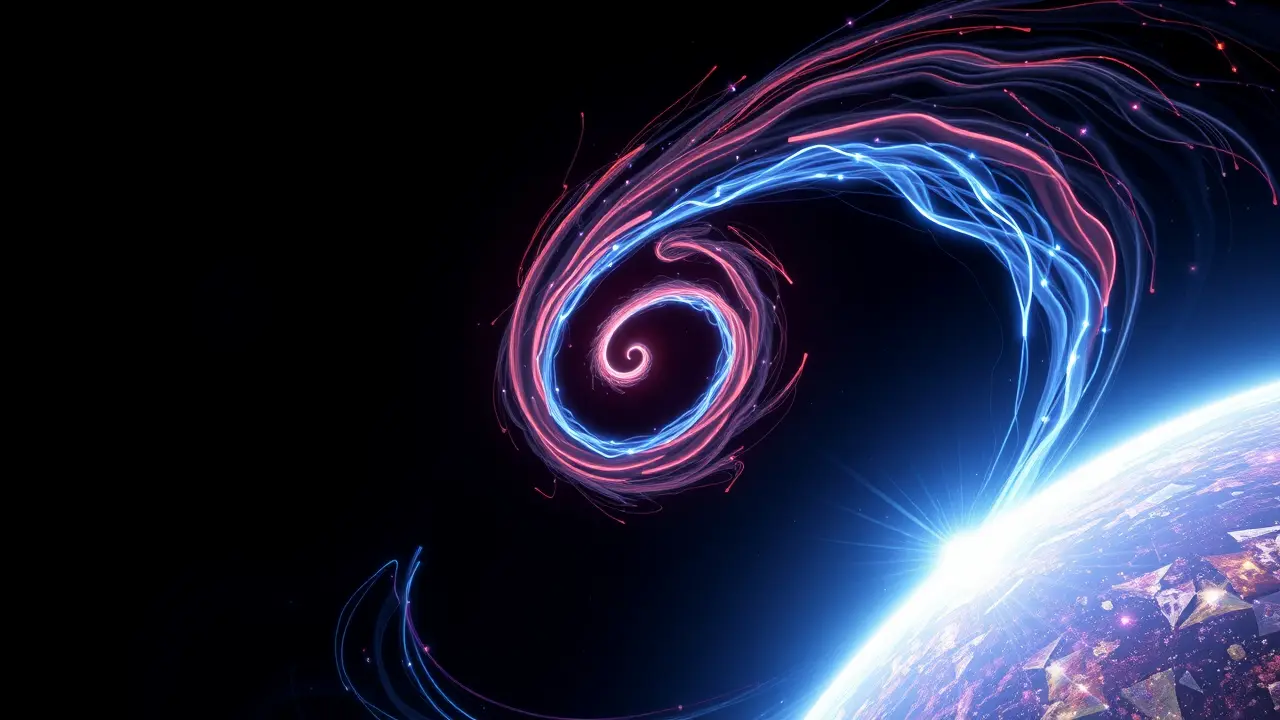Scientists Struggle to Observe New Solar Phenomenon
A startling revelation from a recent study in The Astrophysical Journal suggests our Sun might be hurling explosive plasma spirals, known as flux ropes, directly toward Earth, and the most unsettling part is we'd likely have no warning of their approach. These phenomena are distant, more elusive cousins to the coronal mass ejections (CMEs) that solar physicists routinely monitor, but they present a uniquely stealthy threat due to their smaller scale and different magnetic configuration.While a typical CME is a massive bubble of solar material and magnetic fields blasted into space, often detectable by a fleet of observatories like NASA's Solar Dynamics Observatory and the ESA/NASA SOHO mission, these flux ropes are like solar ghosts—coiled structures of magnetized plasma that can travel the 93 million miles to Earth undetected until they potentially interact with our planet's magnetosphere. The implications are profound, touching on both fundamental solar physics and practical planetary defense.If such an event were to strike, it could induce powerful geomagnetic storms capable of crippling satellite communications, disrupting GPS systems, overloading power grids in a cascading failure reminiscent of the 1989 Quebec blackout, and posing radiation risks to astronauts and high-altitude aviation. The challenge in observing them stems from their inherent properties; they don't produce the clear, bright frontal loop or the distinct halo signature that makes CMEs relatively easy to spot with coronagraphs.Instead, they are often embedded within the solar wind, their magnetic signatures camouflaged against the background flow of particles constantly streaming from the Sun. This observational blind spot highlights a critical vulnerability in our space weather forecasting capabilities, which have largely been built around predicting the larger, more obvious eruptions.The quest to understand these flux ropes is not entirely new; theories and limited observations have suggested their existence for decades, but confirming their behavior as independent, Earth-directed projectiles has been elusive. The recent study leverages advanced magnetohydrodynamic modeling and data from missions like the Parker Solar Probe, which is venturing closer to the Sun than any spacecraft before, to piece together how these structures form, accelerate, and potentially break away from the Sun's corona.Some scientists hypothesize they are born from the complex tangling and reconnection of magnetic field lines in active regions, a process that can store immense energy before releasing it in a coiled, rope-like structure. Others point to their possible role as precursors or building blocks for larger CMEs, suggesting a more complex solar eruption hierarchy than previously understood.The broader context here is our Sun's increasing activity as it approaches the solar maximum of its 11-year cycle, a period where such phenomena are expected to become more frequent and intense. This isn't merely an academic curiosity; it's a pressing operational concern for national power grid operators, satellite companies, and global aviation authorities who rely on accurate space weather predictions.The potential economic impact of a severe, unforecast geomagnetic storm is staggering, with some estimates running into trillions of dollars due to long-term power outages and satellite service loss. Addressing this gap requires a new generation of solar observatories with specialized instrumentation capable of detecting the subtle magnetic and plasma signatures of these flux ropes in transit.Proposed missions, such as the NASA HelioSwarm concept, aim to use a constellation of small satellites to provide multi-point measurements of the solar wind, finally giving us the three-dimensional view needed to spot these hidden threats. Until then, scientists are in a race against the solar cycle, trying to refine their models and develop indirect detection methods before the Sun sends a stealthy flux rope our way that we never saw coming.
It’s quiet here...Start the conversation by leaving the first comment.
© 2025 Outpoll Service LTD. All rights reserved.
